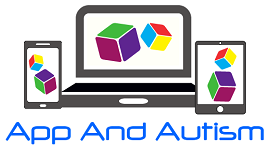Gli effetti dei training di comunicazione assistita tramite applicazioni sui comportamenti comunicativi e sociali di bambini con autismo
The Effects of Peer Assisted Communication Application Training on the Communicative and Social Behaviors of Children with Autism
Strasberger SK, Ferreri SJ.
Journal of Developmental and Physical Disabilities, 26(5), 513-526. doi: 10.1007/s10882-013-9358-9.
Abstract
Non-verbal children with autism are candidates for augmentative and alternative communication (AAC). Augmentative and Alternative Communication is defined as systems that either supplement or replace existing communication when speech impairments are present, such as the case with non-verbal children with autism (Mirenda, Language Speech and Hearing Services in Schools 34(3), 203–216, 2003). One type of AAC device is a speech-generating device (SGD). The primary drawbacks of past SGDs, which are portable electronic devices that produce digitized speech were their expense and portability. Newer iPod-based VOCAs alleviate these concerns. This study sought to evaluate an iPod-based SGD and a peer mediated intervention to teach children with autism more sophisticated communication skills. Using a multiple baseline design, four children with autism were taught through peer assisted communication application (PACA) training how to mand using a two-step sequence and respond to the questions, “What do you want?” and “What is your name?” using a two-step sequence. Data were taken on the number of independent mands and independent responses. Results indicated that three of the four participants were able to acquire communicative skills. The implications are analyzed in regards to the effectiveness of peer assisted communication application training to teach sophisticated communication skills.
Non-verbal children with autism are candidates for augmentative and alternative communication (AAC). Augmentative and Alternative Communication is defined as systems that either supplement or replace existing communication when speech impairments are present, such as the case with non-verbal children with autism (Mirenda, Language Speech and Hearing Services in Schools 34(3), 203–216, 2003). One type of AAC device is a speech-generating device (SGD). The primary drawbacks of past SGDs, which are portable electronic devices that produce digitized speech were their expense and portability. Newer iPod-based VOCAs alleviate these concerns. This study sought to evaluate an iPod-based SGD and a peer mediated intervention to teach children with autism more sophisticated communication skills. Using a multiple baseline design, four children with autism were taught through peer assisted communication application (PACA) training how to mand using a two-step sequence and respond to the questions, “What do you want?” and “What is your name?” using a two-step sequence. Data were taken on the number of independent mands and independent responses. Results indicated that three of the four participants were able to acquire communicative skills. The implications are analyzed in regards to the effectiveness of peer assisted communication application training to teach sophisticated communication skills.

